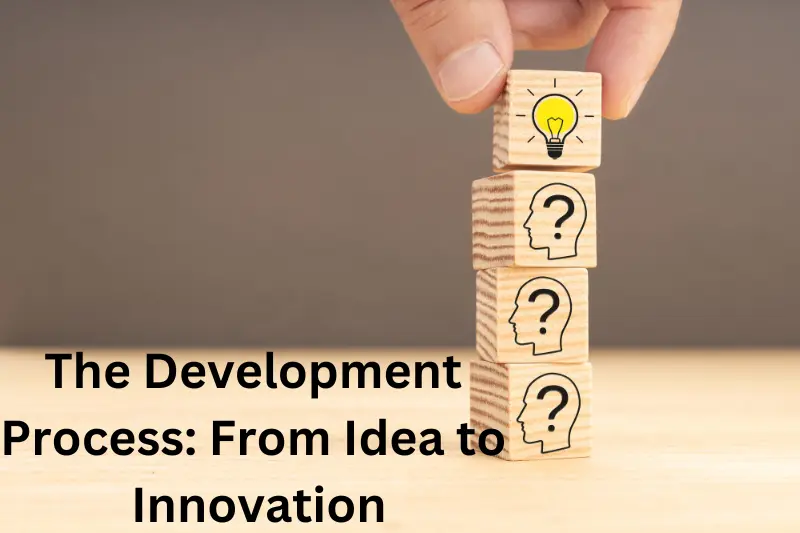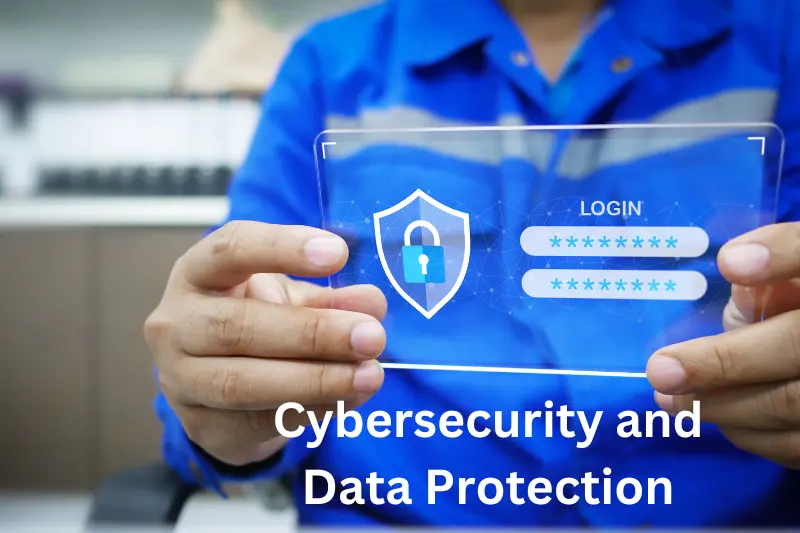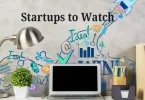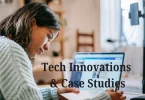Ever wondered what really goes on in the glittering world of the tech giants you rely on every day? From your morning scroll on social media to the voice assistant turning off your lights at night, there’s a complex, fast-paced, and often invisible world humming in the background. It’s a place where ideas spark like lightning, developers burn the midnight oil, and entire teams rally to launch features that might change the way we live.
But today, we’re pulling back the curtain to explore the Behind the Scenes of Popular Tech—to reveal the real people, the real challenges, and the real magic that powers the digital universe we depend on.
The Development Process: From Idea to Innovation

Brainstorming and Ideation
- Every tech marvel starts with a simple question or problem to solve. Whether it’s making communication easier or automating everyday tasks, it all begins with brainstorming.
- Teams composed of product managers, designers, and engineers sit down to evaluate feasibility, user demand, and market trends.
- Real-world user scenarios are mapped out to predict how the tech would integrate into lives.
- Stakeholder meetings, competitor analysis, and early customer interviews help fine-tune the idea before heavy investment.
Prototyping and Design
- Once an idea is approved, it transitions into wireframes and UX prototypes.
- UI/UX designers focus on creating user-friendly, intuitive experiences that align with brand aesthetics.
- Feedback is constantly gathered from internal testers and sometimes closed beta groups.
- Interactive prototypes are created using tools like Figma and Adobe XD to simulate user journeys.
- Accessibility features are planned at this stage to ensure inclusivity.
Engineering and Coding
- Developers get to work turning those designs into reality using cutting-edge frameworks, languages, and tools.
- Security is built in from the start—end-to-end encryption, multifactor authentication, and secure architecture are part of the core.
- Continuous integration and deployment (CI/CD) ensure real-time progress and bug tracking.
- Version control systems like GitHub manage collaborative contributions and code histories.
- Regular peer code reviews and audits are carried out to maintain code quality.
Testing and Quality Assurance
- Rigorous testing phases—unit, system, integration, and user acceptance testing (UAT)—are conducted.
- AI and automated testing tools are commonly used now to speed up the QA process.
- Real-time bug reporting tools like Sentry and Datadog help flag issues before public rollout.
- Testers simulate edge cases and unusual user behavior to break the product before real users do.
- Stress testing under various network conditions ensures the product works globally.
Product Launch and Monitoring
- Launching isn’t just pressing a button—it’s a coordinated dance of marketing, operations, and tech support.
- Post-launch analytics track user behavior, crash reports, and feature usage.
- Teams are on high alert, ready to push hotfixes if any serious issues arise.
- Press releases, influencer promotions, and media coverage are scheduled for maximum visibility.
- Monitoring dashboards provide real-time updates on performance and adoption.
AI and Machine Learning: The Brain Behind Smart Tech
Training the Algorithms
- Machine learning models are trained on massive datasets—images, audio, text—to teach them how to recognize patterns.
- Data scientists constantly fine-tune algorithms for accuracy, fairness, and performance.
- Feature engineering is done to ensure meaningful inputs help improve outcomes.
- The models are tested against labeled datasets to validate performance.
Real-World Applications
- Recommendation engines (like those on Netflix and YouTube) rely on ML to personalize content.
- Virtual assistants like Siri, Alexa, and Google Assistant use NLP (Natural Language Processing) to understand voice commands.
- AI in healthcare predicts patient outcomes, while in finance, it detects fraudulent transactions in real time.
- Self-driving car algorithms process sensor data to make split-second decisions.
- Chatbots in customer service use ML to understand and resolve queries efficiently.
Behind Closed Doors: Ethical Dilemmas
- Engineers face moral challenges regarding data usage, privacy, and algorithmic bias.
- Internal review boards and ethics committees are becoming more common to evaluate these concerns.
- The black-box nature of AI models often makes it hard to trace decisions.
- Companies are being urged to make their algorithms explainable and transparent.
Cloud Infrastructure and Data Centers
What Powers Your Apps
- Most tech services today are hosted on cloud platforms like AWS, Google Cloud, or Microsoft Azure.
- These services run on massive data centers—buildings filled with servers, networking hardware, and cooling systems.
- Elastic computing allows resources to scale up or down based on demand.
- Load balancers distribute traffic evenly to avoid service downtime.
Energy and Sustainability
- Tech companies are investing in green energy to power data centers—solar, wind, and hydro sources are on the rise.
- AI is also used to optimize power usage and reduce waste.
- Liquid cooling systems and renewable energy credits (RECs) are becoming standard.
- Carbon footprint dashboards help teams monitor their environmental impact.
Redundancy and Security
- Multiple backups, real-time replication, and failover systems keep services running 24/7.
- Security teams simulate cyberattacks regularly to test system resilience.
- Multi-zone deployments ensure that if one region goes down, another can instantly take over.
- Fire suppression systems and biometric access controls protect physical infrastructure.
Design and User Experience: The Unseen Art
User-Centric Design Philosophy
- Designers dig deep into user psychology to create interfaces that are not just functional but also delightful.
- Features like dark mode, voice commands, and gesture-based navigation are all tested extensively for user comfort.
- Color theory, typography, and visual hierarchy are carefully applied for better usability.
- Designers work with developers to ensure design consistency across platforms.
Accessibility Matters
- Inclusive design ensures tech is usable for people with disabilities—screen readers, voice inputs, and colorblind-friendly themes are some innovations.
- Teams collaborate with real users with disabilities to refine the experience.
- Accessibility guidelines like WCAG are followed rigorously.
- Continuous updates ensure that evolving needs are met across all user groups.
Internal Culture and Team Dynamics
Fast-Paced Environment
- Working at a tech giant means quick pivots, weekly releases, and constant innovation.
- Teams use agile methodologies—scrum meetings, sprints, and retrospectives.
- Hackathons and innovation weeks are used to encourage creativity.
- KPIs and OKRs help measure progress and keep teams aligned.
Work-Life Balance Challenges
- Long hours are common during product launches or crisis moments.
- Companies now offer wellness programs, mental health support, and flexible work schedules to address burnout.
- Remote work policies and asynchronous communication tools help employees maintain balance.
Diversity and Inclusion
- Modern tech companies are placing increasing emphasis on building diverse teams.
- Internal initiatives, mentorships, and inclusion training are actively implemented.
- Diversity in hiring panels and blind recruitment are growing trends.
- Employee Resource Groups (ERGs) provide support and amplify voices from underrepresented communities.
Cybersecurity and Data Protection

Constant Vigilance
- Behind the firewalls, security experts are always monitoring traffic for threats.
- Tools like SIEM (Security Information and Event Management) and threat intelligence platforms are standard.
- Red team vs. blue team exercises simulate real-world attack scenarios.
Evolving Threat Landscape
- Phishing, ransomware, and DDoS attacks are growing in sophistication.
- Tech companies often partner with cybersecurity firms for external audits and compliance checks.
- Zero-trust architectures are being adopted for tighter access controls.
- Behavioral analytics detect anomalies in user activity.
User Education
- Security isn’t just internal; educating users on password hygiene, 2FA, and recognizing scams is also a core responsibility.
- Interactive training modules and awareness campaigns are used to improve user behavior.
- Multi-language support ensures education reaches global audiences.
Scroll a little further and thank yourself later.
The Future of Tech: Innovations That Will Shape Tomorrow
Catch Up on the Hottest Trending Topics & Commentary Now!
Secure Browsing & Email Safety for Total Peace of Mind
“Stop Online Scams & Protection: Safeguard Your Digital Life
The Role of Feedback and Iteration
User Feedback Channels
- In-app surveys, app store reviews, and customer support chats offer real-time insight.
- Feedback is categorized by severity, urgency, and frequency.
- Social media listening tools track what users say beyond the app.
Iterative Improvement
- Features are updated based on user input and analytics.
- A/B testing is used to compare design or functionality changes before full rollout.
- Feedback loops ensure that each iteration is better than the last.
Community Building
- Tech firms foster user communities through forums, ambassador programs, and social media.
- Engaged communities help debug, suggest features, and evangelize products.
- Open beta testing with power users helps refine products before release.
Upcoming Trends Shaping the Future
Extended Reality (AR/VR)
- AR is already transforming shopping, gaming, and remote assistance.
- VR is gaining ground in training simulations, therapy, and education.
- Mixed reality (MR) blends real and digital environments for immersive experiences.
- Spatial computing is becoming the next interface layer for digital interaction.
Quantum Computing
- Though still experimental, it promises to revolutionize encryption, chemistry, and optimization problems.
- Quantum supremacy has been achieved in limited scenarios, pointing to rapid advancements.
- Governments and companies are heavily investing in quantum research labs.
Ambient Computing
- Devices will blend more seamlessly into the background—smart homes, wearables, and IoT working as one unified system.
- Context-aware computing ensures devices respond based on location, time, and behavior.
- Privacy and consent mechanisms are being designed to give users more control.
Personalized Everything
- From medicine to news feeds, hyper-personalization through AI is becoming the norm.
- Algorithms adjust services in real time based on user data and behavior.
- Real-time user profiles are built dynamically to enhance content and experience.
Sustainability as a Core Principle
- From eco-friendly packaging to carbon-neutral operations, sustainability is moving from PR to practice.
- Consumers are now making choices based on a brand’s ethical and environmental stance.
- Supply chain transparency and ethical sourcing are top priorities.
Conclusion
In a world where technology is seamlessly woven into the fabric of our daily lives, it’s easy to forget the enormous complexity and effort that makes it all work. What we see as sleek interfaces and seamless experiences are actually the result of years of brainstorming, engineering, testing, and refining. The real story lives in the Behind the Scenes of Popular Tech—a place where innovation, passion, and human effort shape the future we wake up to every day.
FAQs
What happens behind the scenes when I use an app?
Behind every tap is a network of servers, code, and databases working together to deliver fast and secure responses—all built by teams of engineers, designers, and testers.
How do tech companies ensure their apps are secure?
They use layered security, including encryption, firewalls, and regular security audits, while constantly monitoring for threats to protect user data.
Why do tech products go through so many testing stages?
Multiple tests help catch bugs, improve usability, and ensure the product works across different devices and situations before it reaches the public.
How do AI models get so smart?
They’re trained on massive datasets, constantly updated, and fine-tuned by data scientists to recognize patterns, respond accurately, and improve over time.
Are tech companies doing anything to be more eco-friendly?
Yes, many invest in renewable energy, optimize data center efficiency, and design products with sustainability in mind to reduce their environmental impact.
Would you like a visual diagram to show how an app moves from idea to launch?




